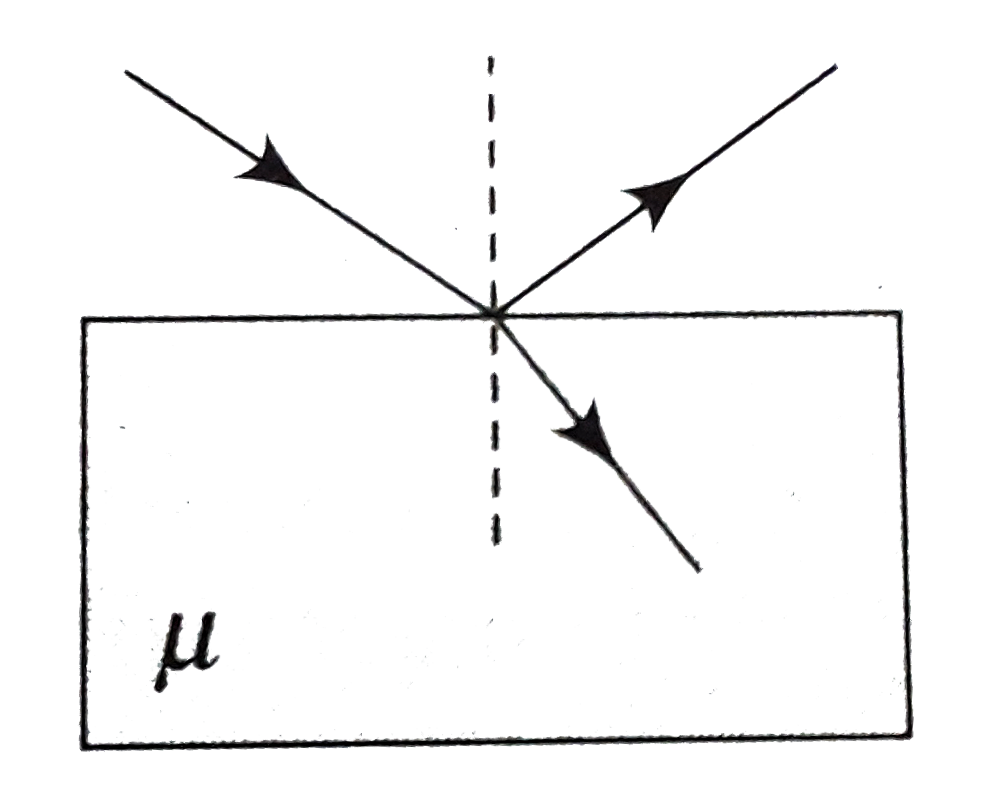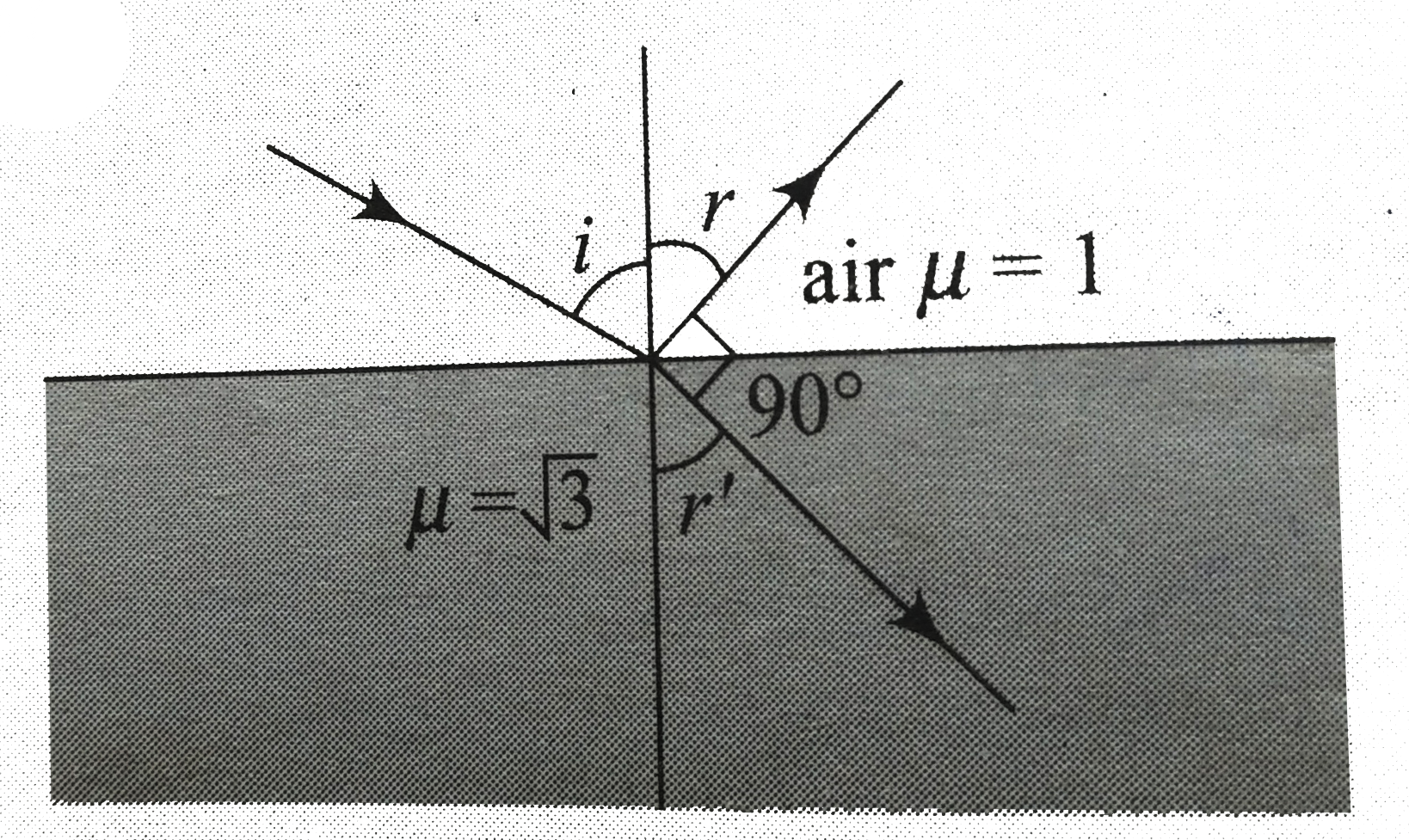A ray of light falls on a transparent glass plate. Part of it is reflected and part is refracted. The reflected and refracted rays can be perpendicular to each other for
(a) no angle of incidence
(b) angle of incidence equal to 90∘
(c) more than one angle of incidence
(d) only one angle of incidence
The correct Answer is:D
This 'one angle of incidence' is called polarising angle.
Topper's Solved these Questions
- WAVE OPTICSBook:A2ZChapter:WAVE OPTICSExercise:Problems Based On Different Concepts
Explore 39 Videos
- WAVE OPTICSBook:A2ZChapter:WAVE OPTICSExercise:Section B - Assertion Reasoning
Explore 23 Videos
- WAVE OPTICSBook:A2ZChapter:WAVE OPTICSExercise:Young'S Double Slit Experiment
Explore 111 Videos
- SOURCE AND EFFECT OF MAGNETIC FIELDBook:A2ZChapter:SOURCE AND EFFECT OF MAGNETIC FIELDExercise:Section D - Chapter End Test
Explore 30 Videos
Similar Questions
A ray of light falls on a transparent glass slab of refractive index 1.62. If the reflected ray and the refracted rays are mutually perpendicular, what is the angle of refraction ?
View SolutionFind the angle of refraction for a ray of light falling on a transparent medium of refractive index 1.6.
The reflected and refracted rays are perpendicular to each other.
View Solution
Knowledge Check
A ray of light falls on a transparent glass slab of refractive index √2. If the reflected and refracted rays are mutually perpendicular, then the angle of incidence is
Atan−1(√32)Bsin−1(√23)Ctan−1(√2)Dsin−1(√3)Statement I: A lighr ray is incident on a glass slab. Some portion of it is reflected and some is refracted. Reeefracted and reflected rays are always perpendicular to each other.
Statement II: Angle of incidence is equal to angle of reflection.
 AStatement is True, Statement II is True, Statement II is correct explanation for Statement IBStatement I is True, Statement II is True, Statement II is NOT a correct explanation for Statement I.CStatement I is True, Statement II is False.DStatement I is False, Statement II is True.
AStatement is True, Statement II is True, Statement II is correct explanation for Statement IBStatement I is True, Statement II is True, Statement II is NOT a correct explanation for Statement I.CStatement I is True, Statement II is False.DStatement I is False, Statement II is True.A ray of light in incident on a glass plate at an angle of 60∘. What is the refractive index of glass if the reflected and refracted rays are perpendicular to each other?
A(a) tan60∘B(b) cot60∘C(c) sin60∘D(d) cos60∘
A ray of light falls on a transparent glass slab of refractive index 1.52. If the reflected ray and refracted ray are mutually perpendicular, what is the angle of incidence?

View SolutionA ray of light is incident on a transparent glass slab of refractive index √3. If the reflected and refracted rays are mutually perpendicular, what is the angle of incidence?

View SolutionA ray of light falls on a transparent glass slab of refractive index 1.62. If the reflected ray and the refracted ray are mutually perpendicular, the angle of incidence is
View SolutionA ray of light falls on a transparent glass slab of refractive index 1.62. If the reflected ray and the refracted ray are mutually perpendicular, the angle of incidence is
View SolutionA ray of light falls on a transparent glass slab of refractive index 1.62. What is the angle of incidence if the reflected ray and refracted ray are mutually perpendicular?
View Solution
